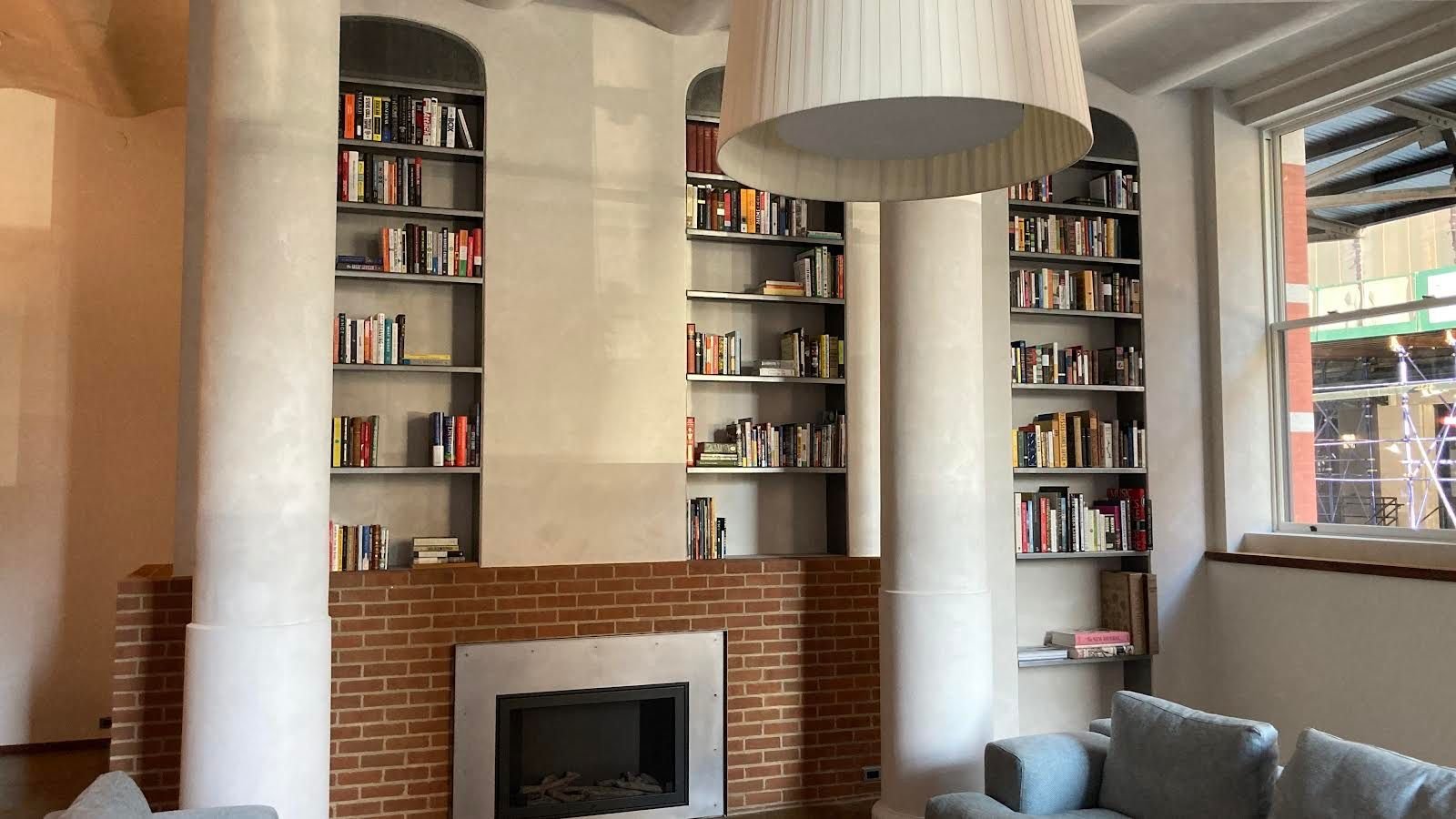Curation
Creating Balance in Private Libraries
Founder and Principal Librarian Christy Smirl.
by Tara Cheesman
We seem to be reading about curation and balance everywhere lately. Lifestyle gurus and influencers, in particular, have embraced these two words, incorporating them into brands focused on helping you achieve "work-life balance" & showing you how to live a "curated life." It's easy to forget the quiet, functional definitions and philosophies behind the marketing and commercial puff. Curation is the act of selecting the best and most appropriate items for presentation or exhibition. Balance is defined as an aesthetically and, to this, I would add, intellectually pleasing integration of elements. These concepts have a long legacy in the library as an institution, and are the foundation of the services we provide our clients at Foxtail Books.
Great private collections reflect the minds and passions of their owners. The Pierpont Morgan Library in New York, The Philip Roth Collection housed at the Newark Public Library, Thomas Jeffersons's Personal Library at The Library of Congress, and The Rosenbach in Philadelphia are special because they provide us with the opportunity to view the world from a specific individual's perspective. We always keep these kinds of places in mind when building (or building on) a collection for a client.
“You might imagine wild spending sprees in international bookshops and auction houses. But, in truth, our collections are carefully planned and developed.”
Curated collection of literature, business, children’s books, and NYC history.
And, so, every Foxtail Books collection begins with an interview. We want to know our clients' interests, intentions, how and where they want to live with their books. You might imagine wild spending sprees in international bookshops and auction houses. But, in truth, our collections are carefully planned and developed. Accomplishing this requires a great deal of organization and intentionality. For example, in 2022, we were approached by a client who wanted an extensive military history collection configured to fill the dimensions of a large room. We divided the number of volumes into eras, wars, and themes, weighted by historical legacy and publishing trends (i.e. a larger section on World War II than the Korean War). We determined the availability of books in each subject and the amount of shelf space appropriate. Each of our book selectors was provided with a narrow to-do list of books to identify and source.
“Curation is the act of selecting the best and most appropriate items for presentation or exhibition.”
Once we understand the subjects our clients would like to be represented, we break our list down into proportions based on the configuration of the shelving, settling on an estimated number of books. Then we research and explore, thoughtfully building an outline encompassing each subject area's angles and entrance points. This sometimes means seeking out a different perspective on a historical event. Or as complicated as attempting to incorporate other media if, for examplethe history enthusiast chooses to include maps and ephemera in their collection. A music lover might request a mix of vinyl albums, musicians' memoirs and biographies, and concert posters. The possible iterations are as endless and unique as the person asking for them.
Curated collection of tech, business, science, and SciFi/Fantasy books on a tech campus in Vancouver, Washington.
For readers attempting this at home, we recommend thinking about your own collection of books. Even if you read widely, patterns always develop. You may discover you lean not just towards fiction or non-fiction but prefer specific genres, periods, authors, or regions. Once we establish a starting point, our librarian's job is to help reverse engineer from there. Or, if your intentions are less individual and more communal – you want to create a collection for a guest house, for your family to enjoy, or as a gift – there are areas of universal interest that can be shaped to reflect a location, shared interests, or to satisfy anyone just looking for something good to read.
Tara Cheesman is a freelance book critic and a National Book Critics Circle member. Her work has appeared in The Los Angeles Review of Books, CrimeReads, Guernica, Vol. 1 Brooklyn, The Mystery Tribune and other online publications. She received her Bachelors of Fine Arts from the School of Visual Arts in New York City.



